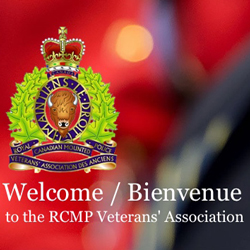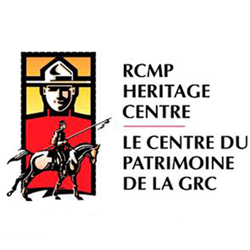C/Supt. Jack White
Every generation produces people who are outstanding and Chief Superintendent (Retired) John Wesley (Jack) White of the Royal Canadian Mounted Police (RCMP) certainly fit that category. He died on February 22, 2011.
Jack White led an exciting life in the Force. One of the most dramatic events in his career occurred when he exchanged fire with, and eventually killed, George Booth of Knutsford, B.C. Two hours earlier, Booth gunned down and killed three constables from the RCMP Detachment in Kamloops, B.C.
At approximately 9:20 AM on June 18, 1962, George Ferguson (a Provincial Game Warden) observed a lone male leaving the Kamloops Provincial Building, carrying a .303 rifle. Ferguson asked him where he was going. Suddenly, the man shoved the muzzle of the rifle against Ferguson and told him to ‘get the hell out of here or I’ll kill you.’
Ferguson immediately returned to his office and telephoned the Kamloops Detachment and reported the incident.
Constables Gordon E. Pedersen, Elwood J. Keck, and Donald G. Weisgerber were dispatched to Ferguson’s office to interview him. He told the constables the suspect was last seen heading to nearby Peterson Creek and probably into the bush area.
All three Constables raced to Peterson Creek. In an effort to locate the suspect, they walked up the open valley.
Above them, hidden in the bush, the suspect waited. As the three constables drew closer, he immediately shot one of them; the two others took cover underneath a nearby bridge. When one of the constables stuck his head out to look around he too was killed by the suspect. The third stayed under the bridge. The suspect maneuvered his way to the bridge deck; he fired his rife through the gaps in the deck and mortally wounded the constable. However before dying, the constable fired his .38 revolver and wounded the suspect
Employees in the Kamloops Provincial Building saw the three members fall and reported the direction the suspect was travelling.
Every available member was called upon to participated in this manhunt; a helicopter and hounds were used. The coordinated effort was to contain and confront the suspect. A short time thereafter, the suspect was spotted climbing the nearby hill.
Corporal Jack White and Constable J.A.N. (Norm) Belanger, of the General Investigation Section (GIS), were delegated to intercept the suspect. Both members were in civilian clothes armed only with snub-nosed, .38s and had a Force, although there was an issued, .303 rifle in the trunk of their unmarked police car. On route to the scene of the shooting, each picked up a personal rifle – Corporal White’s was in .270 calibre.
Shortly after-noon, Constable Belanger heard movement in the bush over the crest of a hill in the Peterson Creek Park. He and Corporal White were within thirty feet of the suspect when he opened fire on both of them. It was later learned the suspect, like Corporal White, was an excellent marksman.
A gun battle ensued; during which time twenty shots were exchanged. Corporal White sought cover behind a rock near a small pine tree, while his comrade sought cover in the scrub brush. The suspect lay on his stomach – and behind a tree and many of his shots ricocheted off the rock which protected Corporal White. One of the suspect=s rounds struck the tree and a piece of bark hit Corporal White on his forehead; following which he had blood dripping down his face.
Suddenly, the suspect paused to reload. According to Corporal White, AI could hear him working the bolt on his rifle and knew it was safe to take careful aim while he reloaded.@ In the process of preparing to take another shot, the suspect exposed his position and was shot dead by Corporal White.
Based on their actions that day, Corporal White and two other members, received the Commissioner’s Commendation for Bravery.
In 1966, he received a Commanding Officer’s Commendation for his tenacity and perseverance during the investigation of the murder of Anna Caroline Whitby on July 7, 1966. The Citation read, in part: ‘Sergeant White’s methodical, tireless enquiries and his tactful, sympathetic approach to the next of kin were of major significance in the satisfactory conclusion of this investigation.’
When the Mayerthorpe killings were reported in the news, Jack White admitted that it brought memories of that hot day in 1962 when he was faced with a similar situation. According to Jack, he had a sense of what the four members at Mayerthorpe dealt with when they became targets.
During service in the Force, Jack served in many locations. He underwent recruit training in “Depot” Division and “N” Division in 1950. Following training, he was posted to BC; Kelowna Detachment from 1951-52; Golden Detachment in 1953; Kamloops Detachment from 1954-1957; Kamloops Sub-Division Criminal Investigation Branch from 1958-1961; New Westminster Sub-Division GIS from 1962-1968; then to Burnaby Detachment GIS; Vancouver GIS and administrative duties with Victoria Sub-Division HQ.
He was Commissioned as a Sub-Inspector in 1973, and shortly thereafter was appointed OIC (Officer in Charge) of Vancouver Drug Section, a position he held from 1973-1976. That was followed by one year on Drug Intelligence work and undercover operations. In 1978, he was promoted to Superintendent and was transferred to Newfoundland, as the Officer Commanding St. John’s Sub-Division.
In 1982, he was promoted to Chief Superintendent and transferred back to BC and, until his retirement in 1985, he was OIC Contract Policing for the province.
He remained active following his retirement, especially in activities which related to the history of the RCMP. Published in 2002, the book AHonoured in Places: Remembered Mounties Across Canada@ was co-authored by Staff Sergeant (Ret’d) William J. (Bill) Hulgaard and Jack.
Jack White contributed greatly to the Force during thirty-five years of service and also during his retirement years. He will be greatly missed.


 January 19, 2012
January 19, 2012 








